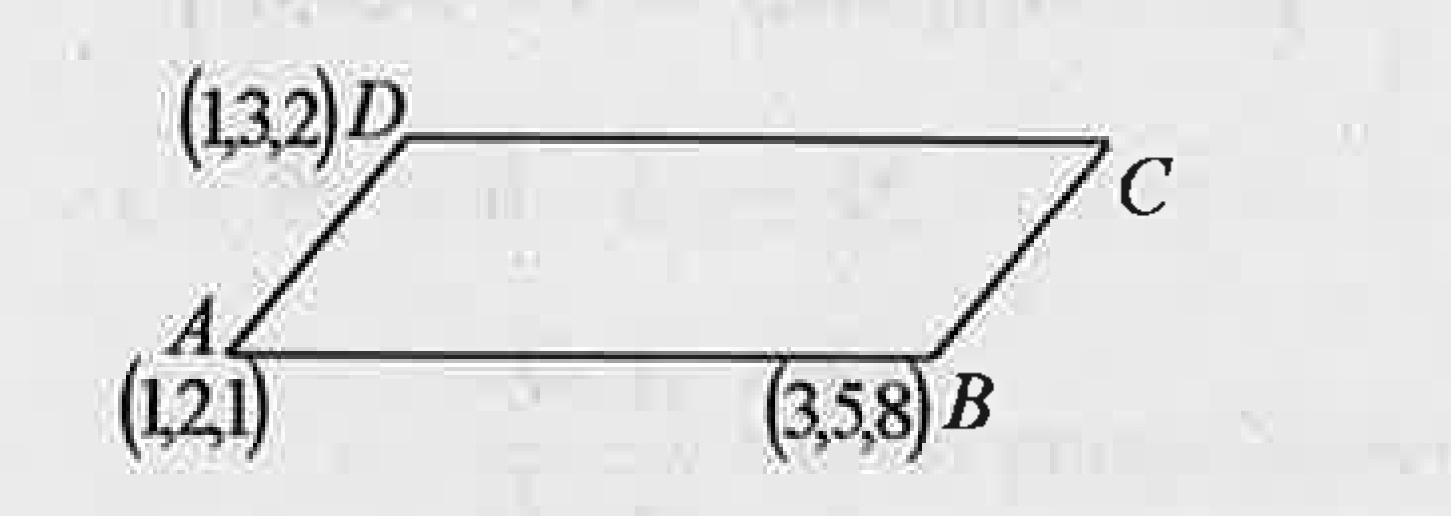If ABCD is a parallelogram, then −−→AB+−−→AD+−−→CB+−−→CD is equal to Solution in Tamil
2(¯¯¯¯¯¯AB+¯¯¯¯¯¯AD)
4¯¯¯¯¯¯AC
4¯¯¯¯¯¯BD
¯0
Step by step video & image solution for If ABCD is a parallelogram, then vec(AB)+vec(AD)+vec(CB)+vec(CD) is equal to by Maths experts to help you in doubts & scoring excellent marks in Class 11 exams.
Updated on:21/07/2023Topper's Solved these Questions
- MODEL TEST PAPERBOOK - FULL MARKSCHAPTER - MODEL TEST PAPEREXERCISE - PART-II
18 Videos
- MODEL TEST PAPERBOOK - FULL MARKSCHAPTER - MODEL TEST PAPEREXERCISE - PART-III
18 Videos
- INTRODUCTION TO PROBABILITY THEORYBOOK - FULL MARKSCHAPTER - INTRODUCTION TO PROBABILITY THEORYEXERCISE - ADDITIONAL PROBLEM
17 Videos
- SAMPLE PAPER 4 BOOK - FULL MARKSCHAPTER - SAMPLE PAPER 4 EXERCISE - PART-IV
6 Videos
Similar Questions
Find the value of cos 36∘
View SolutionSolve 2|x + 1| - 6 ≤ 7 and graph the solution set in a number line.
View SolutionAn experiment has the four possible mutually exclusive outcomes A, B, C and D. whether the following assignments of probability are permissible.
P(A)=0.32P(B)=0.28P(C)=−0.6.P(D)=0.46
View SolutionIf f:R→R is defined by f(x)=3x−5 , prove that f is a bijection and find its inverse .
View SolutionIf PQ are the mid points of diagonal AC and BD respectively of a quadrilateral ABCD ,then prove that vec AB+vec AD+vec CB+vec CD=4vec PQ
View SolutionIf ABCD is quadrilateral and EandF are the mid-points of ACandBD respectively, prove that →AB+→AD +→CB +→CD =4 →EF.
View SolutionGiven a parallelogram ABCD. If |vec AB|=a,|vec AD|=b&|vec AC|=c, then vec DB*vec AB has the value
View SolutionIf M and N are the mid-points of the diagonals AC and BD respectively of a quadrilateral ABCD,then the of vec AB+vec AD+vec CB+vec CD equals
View SolutionIn a quadrilateral ABCD,vec AC is the bisector of the (vec AB^^vec AD) which is (2 pi)/(3),15|vec AC|=2|vec AB|=5|vec AD| then cos(vec BA^^vec CD) is
View SolutionABCD is a quadrilateral. Forces −−→AB,−−→CB,−−→CDand−−→DA act along its sides. What is their resultant ?
View SolutionABCD is a parallelogram . If −−→AB=→a,−−→BC=→b, then what −−→BD equal to ?
View SolutionIf ABCD is a quadrilateral and E and F are the midpoints of AC and BD respectively, then prove that −−→AB+−−→AD+−−→CB+−−→CD=4−−→EF.
View SolutionIf ABCD is a parallelogram, then −−→AB+−−→AD+−−→CB+−−→CD is equal to
View SolutionIf ABCD is a parallelogram then −−→AB+−−→AD+−−→CB+−−→CD= …………………… .
View SolutionConsider the parallelogram ABCD .Find −−→AB and −−→AD

View Solutionसमांतर चतुर्भुज ABCD दिया गया है । यदि ∣∣∣−−→AB∣∣∣=a,∣∣∣−−→AD∣∣∣=b तथा ∣∣→AC∣∣=c है तो −−→DB.−−→AB का मान है
View Solution
